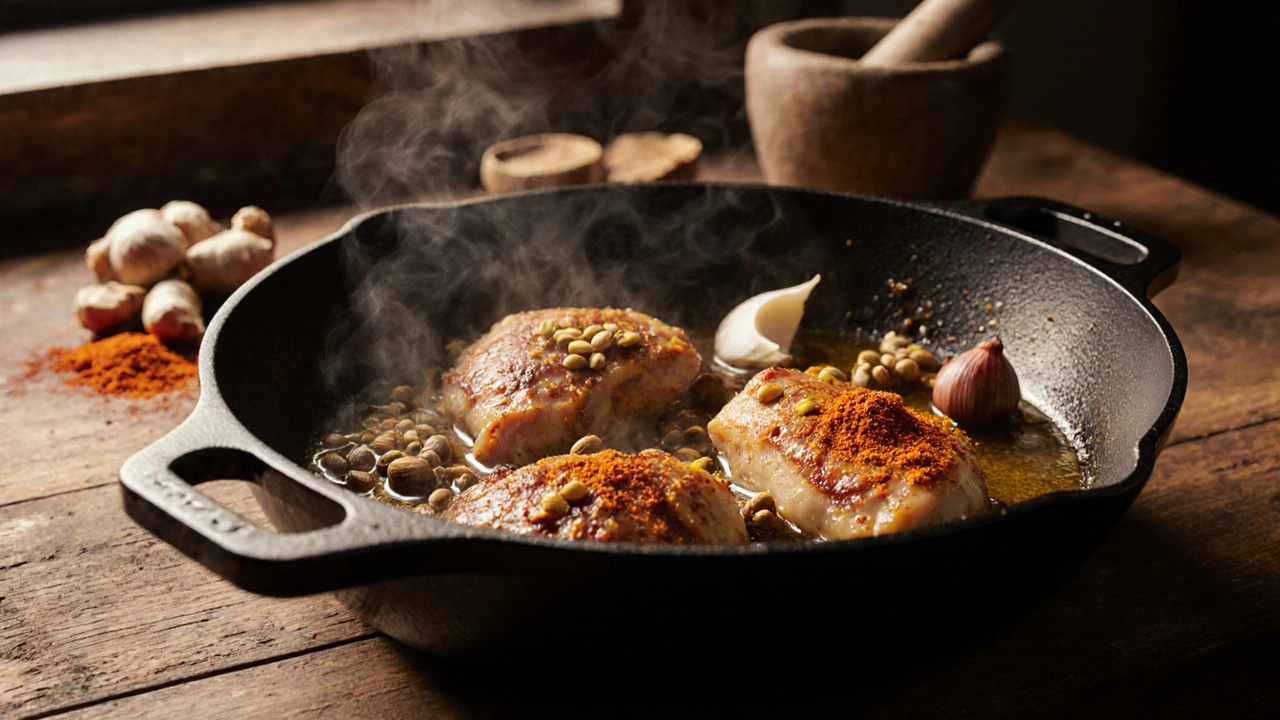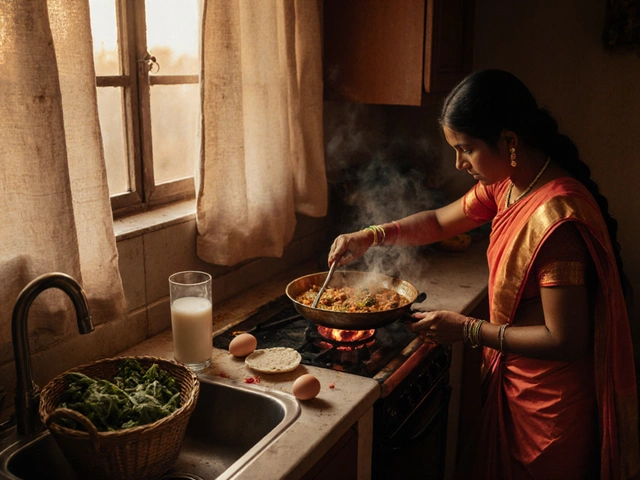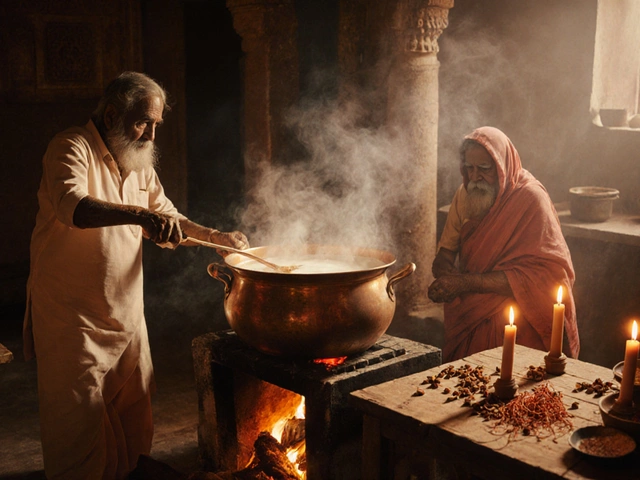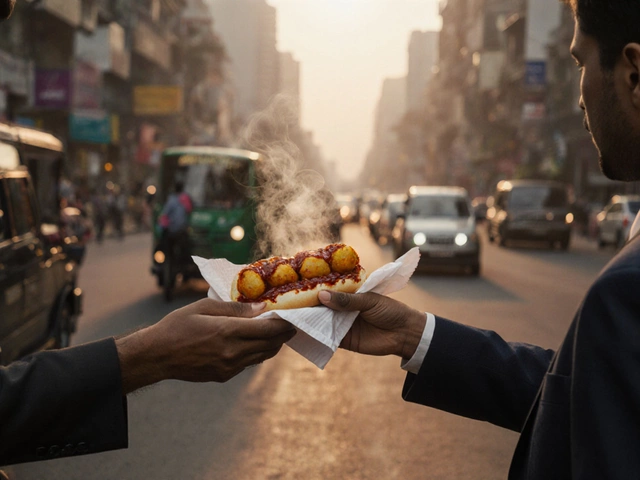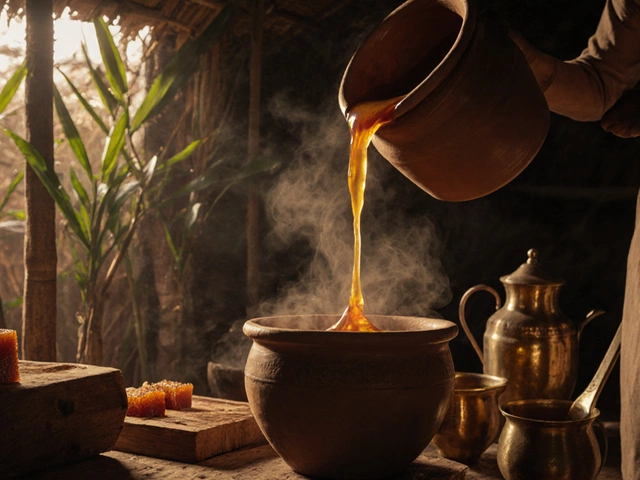Curry Flavor Balance Calculator
Balance Your Curry Flavor
Adjust acid and sweetness levels to find the perfect balance for your chicken curry. Based on secrets from the article.
Flavor Balance Assessment
Chicken curry doesn’t have to be bland. If your curry tastes flat, watery, or just okay, it’s not because you’re missing some exotic ingredient. It’s because a few key steps are skipped-or done wrong. I’ve cooked hundreds of chicken curries in my kitchen in Brighton, from quick weeknight meals to weekend feasts for friends. Here’s what really makes the difference.
Start with the right chicken
Don’t use boneless, skinless chicken breasts if you want deep flavor. They dry out fast and soak up spices like a sponge without giving anything back. Go for bone-in, skin-on chicken thighs instead. The fat and connective tissue melt slowly, basting the meat from the inside. That’s why restaurant curries taste richer-they use thighs, not breasts. You’ll notice the difference in texture, juiciness, and how well the spices cling to the meat. Even if you’re in a hurry, skip the breast. It’s not worth it.Toast your spices before adding liquid
This is the single biggest mistake home cooks make. Throwing ground cumin, coriander, turmeric, and chili powder straight into the pot with water or coconut milk? That’s like tossing tea leaves into a kettle without boiling them. You’re wasting flavor. Heat a tablespoon of oil or ghee in your pot. Add whole spices first-cumin seeds, mustard seeds, a cinnamon stick, a few cloves. Let them sizzle for 30 seconds until they smell nutty and fragrant. Then add ground spices. Stir constantly for 15-20 seconds. You’ll see the color deepen. That’s the Maillard reaction kicking in. It unlocks compounds you can’t get any other way. If you skip this, your curry tastes like powder in water.Use fresh ginger and garlic, not paste
Garlic paste and ginger paste from the jar? They’re convenient, but they lack punch. Freshly grated ginger and minced garlic release oils and enzymes that turn into flavor when cooked. Grate the ginger on a microplane, mince the garlic with a knife-not a press. Presses crush the cells too hard and make the garlic bitter. Sauté them in the oil after the spices, just until the raw smell fades. That’s when the magic happens: sweet, sharp, earthy notes bloom.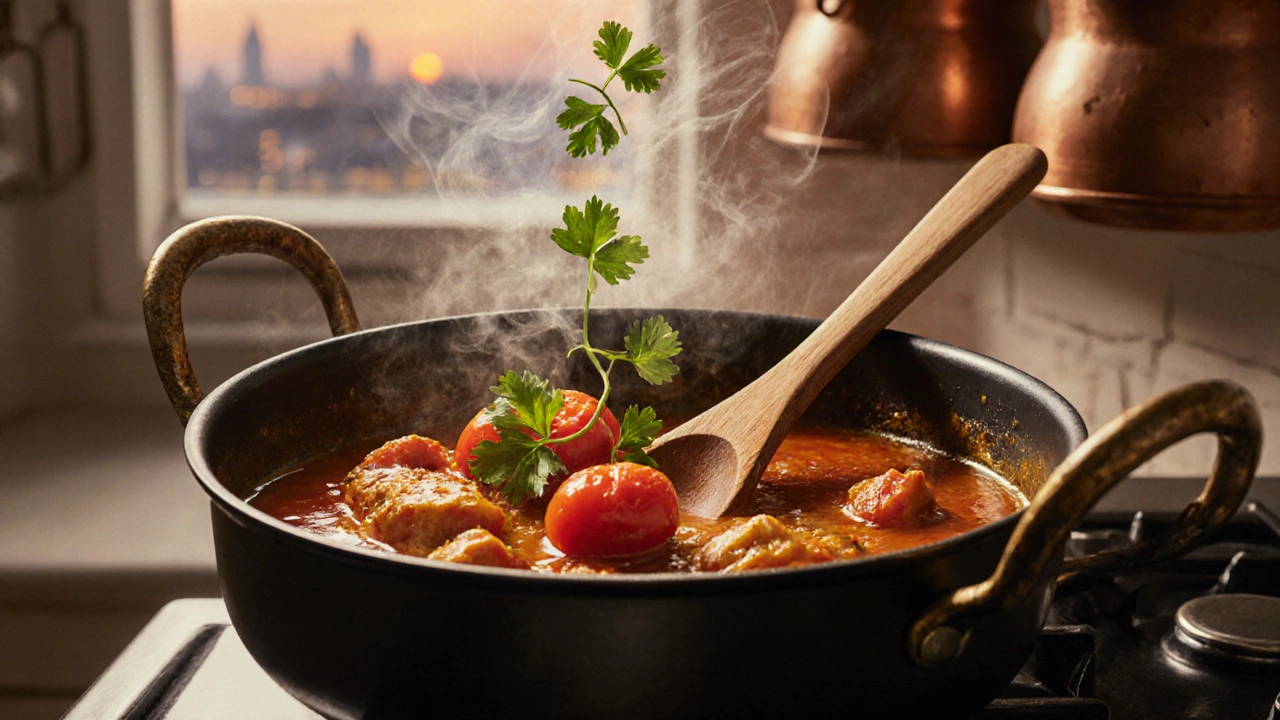
Build layers with tomatoes
Tomatoes aren’t just for color. They’re acid, sugar, and umami packed into one ingredient. Use ripe, juicy plum tomatoes, not canned crushed. Chop them by hand. When you add them to the pot, let them cook down slowly without stirring for 5 minutes. This lets the water evaporate and the sugars caramelize. Stirring too soon turns your curry into tomato soup. Wait until the oil starts to separate from the mixture-that’s the sign the tomatoes have broken down and concentrated. That’s when you know you’ve got depth.Finish with a touch of acidity and sweetness
Curry needs balance. Too much spice without contrast feels harsh. Too much cream without acid feels heavy. Right before you turn off the heat, add a squeeze of lemon juice or a teaspoon of tamarind paste. It brightens everything. Then, add a pinch of sugar-just enough to round out the edges. Not to make it sweet. Just to make the spices sing. A tiny bit of jaggery works too, if you have it. This step is optional in most recipes, but it’s the difference between good and unforgettable.Let it rest
Curry isn’t done when it’s hot. It’s done when it’s rested. Cover it and walk away for 20 minutes. Even 10 will help. The flavors keep marrying. The spices settle into the chicken. The sauce thickens naturally. If you serve it right away, it tastes like it’s still cooking. Wait, and it tastes like it’s been simmering all day. I’ve had guests ask if I cooked it for hours. I didn’t. I just waited.
Use ghee or coconut oil, not vegetable oil
Vegetable oil is neutral. That’s its problem. Ghee (clarified butter) has a nutty, buttery depth. Coconut oil carries a faint sweetness that complements curry spices beautifully. Both have higher smoke points than butter, so they won’t burn when you toast spices. Use ghee if you want richness. Use coconut oil if you want a tropical lift. Either way, ditch the bland oil. It’s the invisible flavor killer.Don’t overdo the curry powder
Pre-made curry powder is a shortcut. It’s fine in a pinch, but it’s a blend of spices that’s been sitting on a shelf for months. The volatile oils have evaporated. What’s left is dust. If you’re using it, use it sparingly. Better yet, skip it. Build your own blend with whole spices you toast and grind fresh. Even if you just buy ground cumin, coriander, turmeric, and chili powder separately and mix them yourself, it’ll taste better. Freshly ground spices smell like a market in Kerala-not a warehouse in Ohio.Final touch: fresh herbs
A handful of chopped cilantro stirred in at the end isn’t just garnish. It adds a bright, grassy note that cuts through the richness. If you don’t like cilantro, try a few torn curry leaves. They’re not common in every kitchen, but they’re cheap at Indian grocers. Fry them in oil for 10 seconds before adding the chicken. They smell like citrus and earth. That’s the secret behind South Indian curries. You won’t find it in a jar.Chicken curry isn’t about complexity. It’s about timing. It’s about respecting each ingredient’s moment. Toast the spices. Brown the chicken. Cook down the tomatoes. Rest the sauce. These aren’t steps. They’re rituals. Do them right, and your curry won’t just taste good-it’ll taste like it’s been passed down.
Why does my chicken curry taste bitter?
Bitterness usually comes from burnt spices or overcooked garlic. When you toast spices, stir constantly and don’t walk away. If the garlic turns brown before the onions soften, you’ve cooked it too long. Always add garlic after the whole spices, and cook just until the raw smell disappears-about 30 seconds. If it’s bitter, try adding a pinch of sugar or a splash of yogurt to balance it.
Can I use frozen chicken for curry?
Yes, but only if you thaw it first. Cooking chicken straight from frozen lowers the pot’s temperature too much, preventing proper browning. Without browning, you lose flavor. Thaw it overnight in the fridge. Pat it dry before cooking-wet chicken steams instead of sears. That’s why your curry ends up watery.
How do I make my curry thicker?
Let the sauce simmer uncovered for 10-15 minutes after adding liquids. If it’s still too thin, mash a few cooked potatoes or a tablespoon of lentils into the sauce. They break down naturally and thicken without changing the flavor. Avoid flour or cornstarch-they make the sauce cloudy and gummy. Real thickness comes from reduction, not starch.
What’s the best substitute for tamarind paste?
Lemon juice or lime juice works in a pinch, but it’s sharper. For a closer match, mix 1 teaspoon of brown sugar with 1 tablespoon of vinegar (apple cider or white). That mimics tamarind’s sweet-sour balance. If you have dried mango powder (amchoor), that’s even better-just use half a teaspoon. It’s traditional in North Indian curries and adds a fruity tang.
Should I add yogurt to chicken curry?
Yes, but not at the start. Add it at the end, off the heat. Stir in 2-3 tablespoons of plain, full-fat yogurt. It cools down the spice, adds creaminess, and helps the sauce cling to the chicken. If you add it while the pot is boiling, it’ll curdle. Wait until the curry is off the stove, then fold it in gently.
